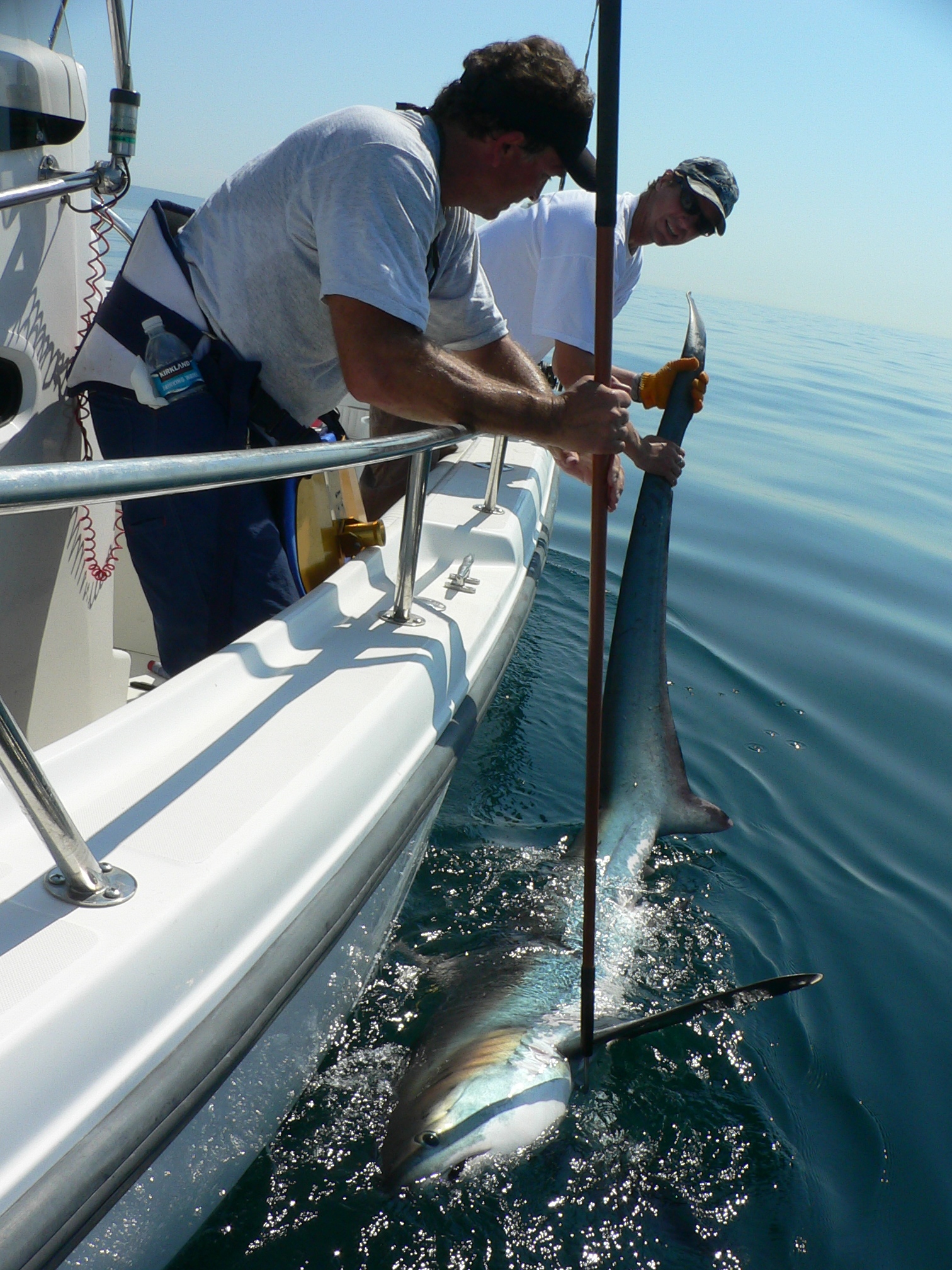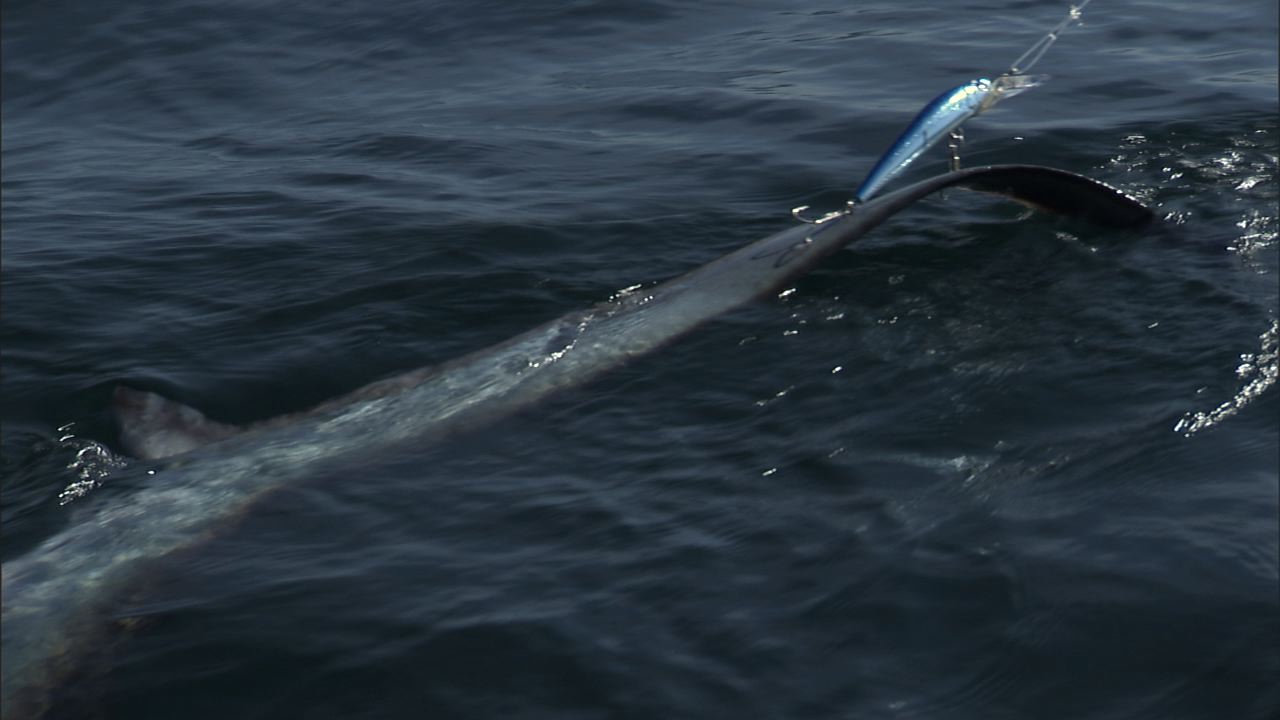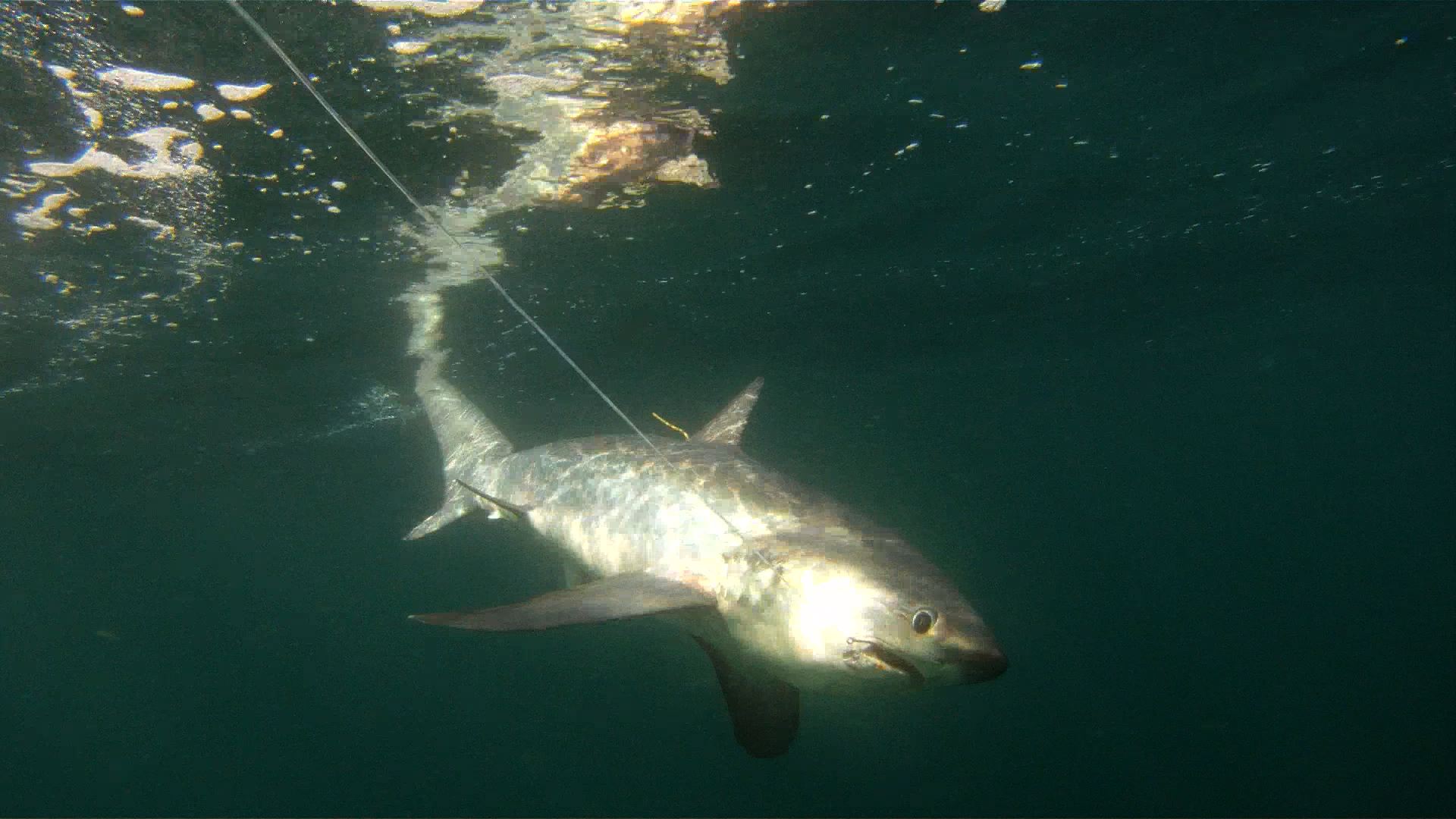Scientists, Anglers Work Together to Prevent Thresher Shark Tailspin
 Catching thresher sharks is on the rise. Fisheries experts are conducting research to determine how to keep the fishery sustainable. Improving gear and encouraging the use of circle hooks is just the Beginning. Continuing this valuable team work is a priority in the new Southwest Regional Recreational Fisheries Action Agenda.
Catching thresher sharks is on the rise. Fisheries experts are conducting research to determine how to keep the fishery sustainable. Improving gear and encouraging the use of circle hooks is just the Beginning. Continuing this valuable team work is a priority in the new Southwest Regional Recreational Fisheries Action Agenda.
December 6, 2011
The nearshore waters off the Southern California coast are a well known hot spot for the common thresher shark, a recreational fishing favorite with a uniquely long whip-like tail that can weigh more than 500 pounds. Its tail, in fact, is exactly why the thresher is now in the center of a ethical fishing dilemma, and the reason why anglers and scientists are working together to change the way they are caught.
In the United States, commercial harvest of the thresher is a federally regulated industry, but recreational fishing for this shark is not. Since the thresher is a challenging fish to catch, this shark has been growing in popularity with recreational anglers in the last 10 years.
“The thresher shark is very unique in that it uses its elongated whip-like tail fin to stun mackerel and sardines, their primary prey, before eating them,” said Craig Heberer, a fisheries biologist for the NOAA Southwest Region's Sustainable Fisheries Division. “Meanwhile, to target the larger sharks, anglers traditionally drag heavy lures with large J-hooks and mackerel bait behind their boats, which threshers strike with their tail, and become hooked and hauled in backwards.”
To catch a thresher by the tail and reel it in backwards puts the shark under significant stress. It loses its ability to pass oxygen over its gills, which research indicates often leads to their death. Since fishing for the thresher shark has become a popular catch and release sport, scientists speculate that some sharks, especially the larger adults, could die as a result of the struggle. It’s difficult to know for sure, however, without tracking the shark after release.
To better understand the impact of recreational fishing on the thresher, NOAA and its partners at the Pfleger Institute of Environmental Research (PIER) are working with anglers to study current fishing practices, determine how many live and die, and find solutions to the problem of catching threshers by their tails.
To do this, NOAA and PIER scientists recreate the techniques of anglers and review areas where skills can be improved. They study the timeline between catching and landing the fish, inspect the type of gear and bait used, and make comparisons to the way a thresher is caught more sustainably by mouth.
 To catch a thresher by the tail and reel it in backwards puts the shark under significant stress. It loses its ability to pass oxygen over its gills, which research indicates often leads to their death.
To catch a thresher by the tail and reel it in backwards puts the shark under significant stress. It loses its ability to pass oxygen over its gills, which research indicates often leads to their death.
Before scientists release the sharks, a small satellite tag is attached near the dorsal fin, where it remains collecting temperature and depth data for 10 days before popping off and transmitting the stored data. The data tells the NOAA-PIER team whether a shark survived being caught.
“So far, the data collected from tags has indicated that if a thresher shark is hauled in by its tail, with a fight time exceeding 85 minutes, 100 percent of them will die,” said Heberer. “That’s a typical time period for an adult thresher to put up a fight.”
Scientists also see indications that sharks released with fishing gear – lures, lines and weights – left trailing from their tails results in higher death rates as well. The NOAA-PIER team estimates that this occurs with one in four sharks, and that many will not survive.
There is a silver lining to this story. Realizing that conservation is a team effort, NOAA Fisheries is working with the recreational fishing industry to encourage the use of circle hooks when targeting big sportfish like the thresher shark. When a shark caught with a circle hook was tagged before release, experts have seen a higher survival rate, since these hooks often prevent hooking the thresher’s tail.
 NOAA and PIER scientists study the timeline between catching and landing the fish, inspect the type of gear and bait used, and make comparisons to the way a thresher is caught more sustainably by mouth.
NOAA and PIER scientists study the timeline between catching and landing the fish, inspect the type of gear and bait used, and make comparisons to the way a thresher is caught more sustainably by mouth.
Now, as catching thresher sharks is on the rise, fisheries experts are conducting research to determine how to keep the fishery sustainable. Improving gear and encouraging the use of circle hooks is just the start. Continuing this valuable team work is identified as a priority in the new Southwest Regional Recreational Fisheries Action Agenda, a planning effort designed to focus NOAA Fisheries attention at the local level - where anglers live and fish.
“It will take a significant outreach effort to education anglers on the best practices for catching these fish,” said Heberer. “Luckily, most fishermen are eager to learn more about how they can fish in a more sustainable, ethical manner. They want to change their ways, which is a win-win for the shark.”
To learn more about the safe release of thresher sharks and NOAA Fisheries’ work to improve and sustain recreational fisheries, visit us on the web.


